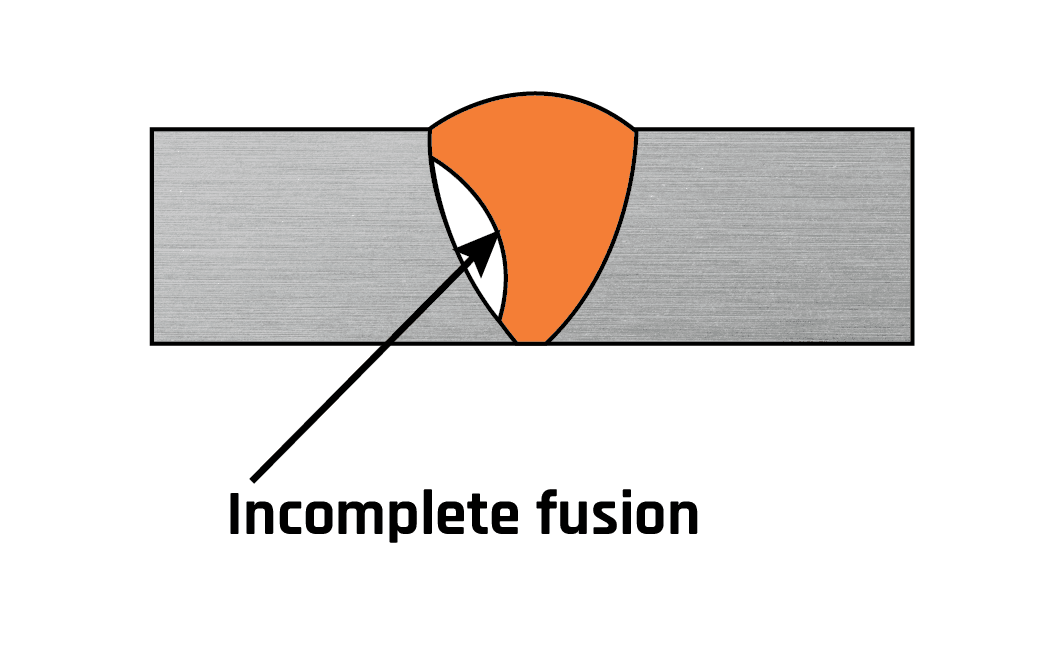Efficient Ways to Prevent Weld Undercut in Your Welding Tasks
Efficient Ways to Prevent Weld Undercut in Your Welding Tasks
Blog Article
Essential Tips for Welders: Preventing Undercut Welding and Ensuring Stronger Weld Joints
In the world of welding, attaining solid and durable weld joints is the cornerstone of producing top quality job. One usual obstacle that welders usually encounter is undercut welding, which can jeopardize the honesty of the weld joint.

Recognizing Undercut Welding
Undercut welding is a typical welding issue that happens when the weld steel stops working to effectively load the groove and causes a groove-like clinical depression along the weld grain. This flaw compromises the weld joint, making it at risk to fracturing and failing under stress and anxiety. Damaging can be brought on by numerous factors, including excessive welding existing, high welding rate, incorrect electrode angle, incorrect electrode size, and bad welding strategy.
One of the primary factors for undercut welding is an inequality in between the welding current and the welding speed. If the welding current is also high or the welding rate is too fast, the weld metal may not sufficiently fill the groove, causing undercutting. In addition, using an electrode that is also large can cause a similar outcome, as the excess steel can not appropriately stream into the groove.
To avoid undercut welding, welders must guarantee they are utilizing the proper welding criteria, keep a suitable electrode angle, select the suitable electrode size, and method proper welding strategies. By attending to these factors, welders can reduce the danger of undercutting and develop more powerful, much more reliable weld joints.
Correct Welding Strategy
Reliable welding technique plays a vital function in making sure the high quality and stability of weld joints. One fundamental aspect of proper welding strategy is preserving the correct angle and range between the welding weapon and the workpiece.
In addition, a constant and constant hand motion is vital for producing strong and durable weld joints. Welders ought to go for smooth, consistent movements to ensure even distribution of the weld material. Correct manipulation of the welding weapon and filler product is likewise key to achieving optimal infiltration and fusion.
Furthermore, controlling the heat input and selecting the proper welding parameters based upon the material being bonded are critical factors in accomplishing high-quality welds - Preventing weld undercut. Welders need to adhere to the advised setups provided by welding procedure specifications and adjust them as needed based on the specific needs of the task. By grasping appropriate welding techniques, welders can substantially improve the strength and integrity of their weld joints
Choosing the Right Electrode
When taking into consideration the relevance of picking the best electrode in welding applications,Preserving the correct angle and range in between the welding gun and the work surface is fundamental. The selection of electrode plays an essential function in identifying the high quality and stamina of the weld joint. Electrodes can be found in various types, each made for particular purposes and products.
First of all, picking the proper electrode check here diameter is important. Thinner electrodes appropriate for welding thin materials, while thicker electrodes are better for thicker materials and greater warmth applications. Matching the electrode diameter to the thickness of the work surface assists achieve a balanced weld.
Second of all, comprehending the material composition of the electrode is essential. Various electrodes are developed for welding specific materials like steel, stainless-steel, light weight aluminum, or cast iron. Using the proper electrode product makes sure great blend and minimizes the threat of issues in the weld.
Finally, taking into consideration the welding setting and technique is vital when picking the electrode kind. Certain electrodes are much better suited for vertical or above welding placements, while others function well for flat or straight settings. Picking the best electrode based on the welding technique boosts the overall weld high quality and honesty.
Preparing the Base Metal
To ensure a successful welding process, what first steps should be taken when preparing the base metal for welding? In addition, any existing weld product or residue from previous welding ought to be removed to ensure a clean surface area for the new weld.

Carrying Out Post-Weld Examinations

After carrying out these evaluations, welders must contrast the results versus market criteria and task requirements to guarantee that the weld joint satisfies all essential requirements. Any kind of variances or inadequacies found during the post-weld evaluation should be quickly resolved via proper corrective measures to assure the weld's honesty. By faithfully performing post-weld evaluations and immediately addressing any concerns, welders can maintain the top quality and dependability of their work, eventually adding to the safety and long life of the welded frameworks.
Final Thought

Finally, protecting against undercut welding and guaranteeing more powerful weld joints need a combination of correct welding method, picking the appropriate electrode, preparing the base steel appropriately, and carrying out post-weld examinations. By understanding the sources of undercut welding and carrying out the needed precautions, welders can produce high-grade weld joints that meet market requirements and make sure the architectural stability of the bonded elements.
Undercut welding continue reading this is a typical welding defect that happens when the weld metal falls short to appropriately load the groove and results in a groove-like anxiety along the weld bead (Preventing weld undercut). Undercutting can be caused by various variables, consisting of too much welding current, high welding rate, inappropriate electrode angle, wrong electrode dimension, and bad welding technique
One of the major factors for undercut welding is an imbalance between the welding current and the welding speed. If the welding current is too high or the welding rate is too fast, the weld metal may not properly fill up the groove, leading to damaging.Keeping the proper angle and range in between the welding weapon and the workpiece is essential when thinking about the importance of picking the appropriate electrode in welding applications.
Report this page